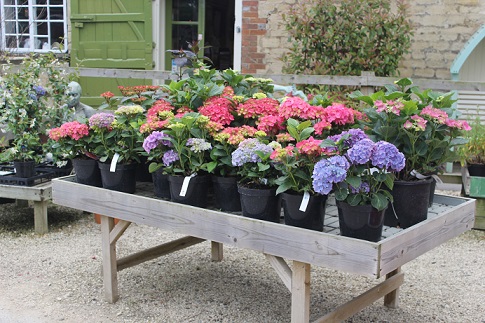Learn how to Start a Nursery Business
This is an introductory course which shows the beginner how to get started in the nursery business.
- Learn how to propagate plants.
- Decide what to propagate.
- Learn how to start a small inexpensive operation.
- Learn how to go about selling what you grow.
Part of every lesson is devoted to the important area of building up
your knowledge of plants. Through six lessons you will learn how many
established nurseries have started out slowly as a small part time
operation, and how you can follow the same path.

COURSE CONTENT
This course is divided into six lessons as follows:
1. Plant Identification and Culture. How plants are named, scientific and common names, watering, weed control, when and how to use a glasshouse/shadehouse.
2. Plant Propagation. Overview of propagation techniques, propagating mixes, pots, hormones, propagating structures and aids.
3. Soils and Nutrition. Soil structure, soil additives, major nutrients, minor nutrients, nutrient deficiencies, salt toxicity, soil mixes, fertilisers.
4. Seed Propagation and Nursery Business. Handling seed, pre-germination treatments, handling seedlings, propagating selected species.
5. Cutting Propagation. Stem cuttings, leaf cuttings, leaf bud cuttings, propagating selected species by cuttings.
6. Pest and Disease. Identifying a problem, insects, fungal diseases, nursery hygiene
Course Duration - 100 hours
Learn what to Propagate in?
Seed, cutting and plant divisions can be used to produce new plants; but unless you use the best propagating and potting mixes, you will simply not get the most success out of those new plants. The availability of materials and equipment varies from time to time and place to place - so there is no one size fits all answer to this problem. As your understanding of nursery growing develops though, so does your ability to make wise and appropriate decisions for the nursery you are developing.
This course will help you determine what equipment and materials, as well as techniques to use for the best results in your locality and situation
The material or combination of materials that you use as a propagation media should have certain properties.
Physical Properties
- The media should provide good physical support to the plants you are growing.
- The media should be reasonably light, easy to handle and easy to stick cuttings into. Sharp edged materials, such as scoria, may be a problem with germinating seedlings.
- The materials used should not readily degrade or break down once in use.
- The media should have good aeration. This will aid water penetration and drainage, give adequate provision for the exchange of gases (i.e. root absorption of oxygen and release of CO2), and provide space for roots to grow.
A mixture of particles ranging in size from around 1mm to 5mm, with the addition of very fine particles from materials such as peat or pine bark generally provides a suitable mix.
Once a media is watered the volume of pore space containing air is reduced.
The percentage of a medium filled with air when just drained is commonly called its air filled porosity or air space. A propagation media should have an air space of at least 27% evenly spread throughout its volume. The ideal available air space will vary according to the plant you are cultivating. For example cuttings of aerial rooting plants require a much higher available air space. The provision of misting will also generally require an increase in the air space of your media. The upper limit should be no more than about 35 40 percent.